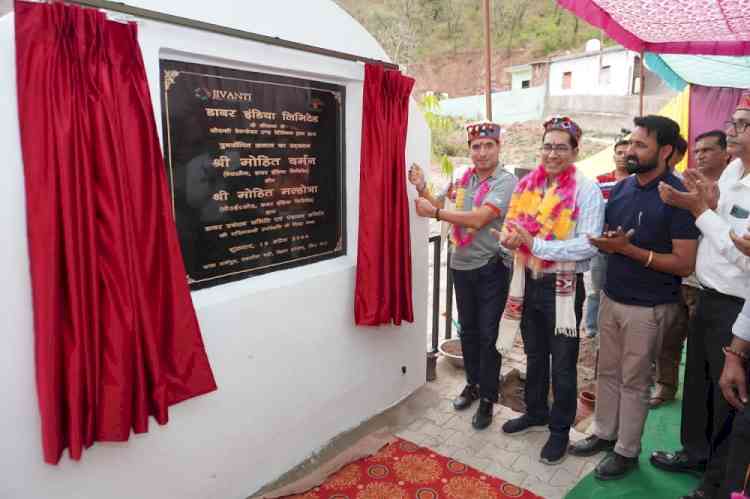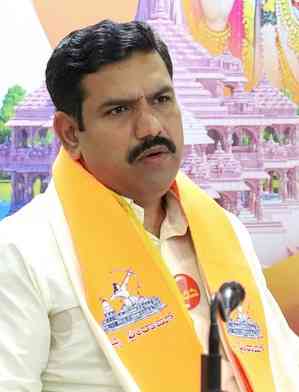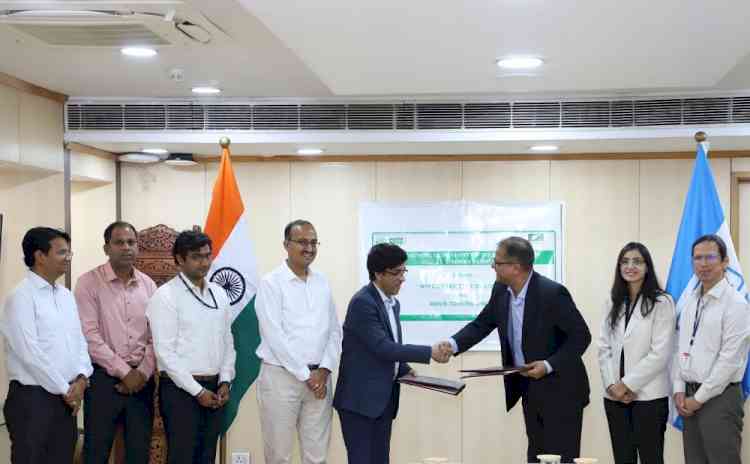Sandeep’s Vlog YouTube Channel on Tibetan Buddhist Monasteries

Prof Sandeep Chahal started Sandeep’s Volg, YouTube channel on 23rd of April, 2019. It is
gaining popularity with the passage of time.
To a question, he reveals that during my visit to Himachal
Pradesh, I was fascinated by Tibetan Buddhist Monasteries. Monastery is
generally very large, and the architectures of monastery are rolling, row upon
row, spectacular, much like a mountain. The monasteries are both venues for
religious activities, and a region's political, educational, economic and
cultural center. Studying Buddhism is also a key
activity in the monastery. Usually a monastery has teaching, teaching
instrument, educational administration and chores, the four parts, and three
exoteric colleges and a tantric college, named Dratsang in Tibetan language.
The dratsang architecture consists of scripture hall, Buddha hall and
frontcourt. It also has debating area, kitchen. In
addition to study of Buddhism, the monasteries also have language,
character, poetry, medicine, and astronomy. At
the entrance of every monastery there are Stupas (Tibetan chorten), which act
as symbolic architecture, the most distinctive construction. Ranging from
simple alter pieces to enormous structures housing large shrine halls, Stupas
are the objects of sincere veneration, a blessing, an inspiration, a reminder
that the potential for enlightenment lies within all beings. They originated as
memorial mounds containing the relics of realized masters, sacred scriptures,
and precious items were also placed in stupas.
Prayer flags are cloth printed with formulas of mantra designed
to benefit beings in different ways, such as removing obstacles, granting long
life, giving good fortune, and so on. They can be blue, white, red, yellow or
green. People may put up prayer flags of the five colors alternating or of only
one color - according to the astrologer's recommendations. As the wind blows
the prayers are carried into the environment and any beings that meet the air
or breathe in that air are blessed.
Prayer Wheels are containers filled with as many mantras
(formulas of sound) the embodiment of compassion - Om Mani Peme Hung. As the
prayer-wheels are spun, (always in a clockwise direction), the blessings of the
mantras are invoked and spiral out to benefit all sentient beings.
Tibetan Buddhism is sometimes called Lamaism, although this is not entirely accurate. But the concept of Lama is quite unique to Tibetan Buddhism. Lamas are generally thought of as guide and teachers in the path to Dharma. In Tantric practises of Buddhism, they may appear alongside the principal deity of the practitioner (called Yidam), alongside other tantric guides such as Dakinis (female tantric guides or goddesses), and other Buddhist deities. Traditionally the title Lama was conferred only upon those Buddhist masters who had some level of spiritual attainment or enlightenment. Three practices of Mandalas, Meditation and Mantra are also synonymous of Tibetan Buddhism and culture. At its most basic level a mantra is used as a form of meditation. Mantras are said to represent enlightenment. Mantras in Tibetan Buddhist practise are often associated with a deity. For example, the mantra “Om Mani Padme Hum” is associated with Chenrezig (the Bodhisattva of compassion). Buddhist meditation can be narrowed down to two main types - Analytical and Concentrative. Analytical meditation includes techniques mentioned in texts such as Lam Rim (Gradual path to enlightenment), applying logic to examine parts of the identity, consciousness, mind, etc. Concentrative meditation involves techniques such as repeating a mantra, or concentrating on the breath or a flame, etc. In concentrative meditation, the point is to still the mind and direct its focus towards one particular thing only. Popular meditation techniques are Dzogchen, Mahamudra, and chanting. Mandalas are spiritual and ritual symbols which represent the entire cosmos. Mandalas are generally made by skilled, trained monks and they use coloured sand to create the mandalas.
Prof Chahal further says, so, the very philosophy of peace and
contentment of Tibetan Buddhism inspired me to make Vlogs on Tibetan Buddhist
Monasteries and so far I have made Vlogs on Sherabling Palpung Monastery
Bhattu Biajnath, Norbulingka Institute, Tibetan Losel Doll Museum , and Gyuto
Tantric Monastery Dharamshala, Tashi Jong Monastery , Tashi Jong Village ,
Palampur and Nyingma Monastery Bir Biling Baijnath and the journey will still
continue to the other parts of Himachal Pradesh. My love for the camera,
designing with photoshop, setting frames for exquisite shoots, capturing the
picturesque and colourful grandeur of monasteries in all their magnificence
gives a sense of inner fulfillment. The basic motive is to make the youth of
our region aware about the inner peace, satiation, satisfaction, solace and
selfless service which Buddhism offers is insurmountable and highly commendable
.it is indeed a path towards self-realization , self-awakening and enlightenment.
Brief Profile of Prof Sandeep
Chahal:
·
He is from PG Department of English, Doaba
College, Jalandhar, Punjab
·
Teaching Experience 23 years
·
President –NGO Dastak Welfare Council
·
Pioneer in Nesting Behaviour of
Birds-14 Meaningful Service in Conservation of Birds
Author
of 3 books –
1. Thermodynamics
of Gender in Selected Novels of D.H.Lawrence I SBN 978-81-921305-1-4,
First Edition 2013, Published by Aastha Prakashan, New Delhi
2. Nesting
Behaviour of Environmental Indicator Birds ISBN 978-93-84407-00-1-,
First Edition 2014, Published by Aastha Prakashan, New Delhi
3. Basra
Strrets – ISBN 978-93-88859-05-9 -, First Edition 2019, Published
by Authors Press New Delhi. (World’s First Petro Fiction)

 cityairnews
cityairnews 
















